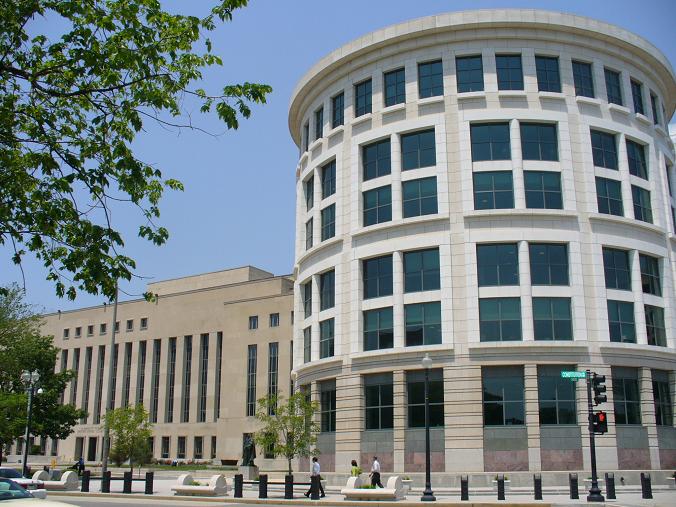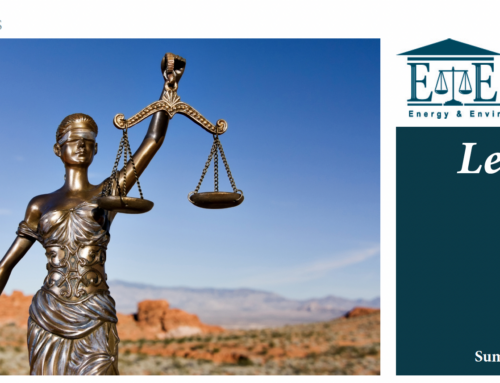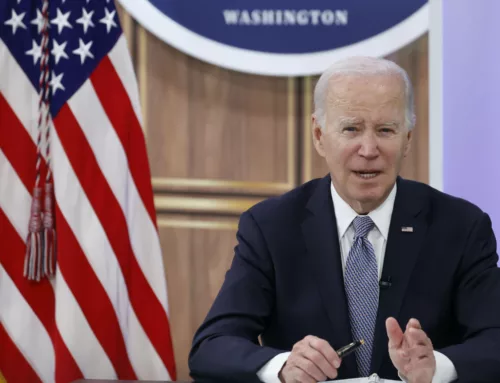by Chaim Mandelbaum
FME Law Counsel
On September 27, 2016, the entire United States District Court for the District of Columbia will hear oral arguments in West Virginia, et al. v EPA, to which E&E Legal is party, challenging the EPA’s “Carbon Pollution Emission Guidelines for Existing Stationary Sources: Electric Utility Generating Units” rule under section 111(d) of the Clean Air Act, over the Environmental Protection Agency’s (EPA) regulation that will cripple, and in many cases, shut down coal-fired power plants.
The hearing comes after the surprise decision in May to take the case from the original three judge panel it was assigned to, and have it heard en banc by the full Circuit Court. However, since two judges, Judge Garland and Judge Pillard, have recused themselves, only nine active judges of the Court will hear the case, whichis more complex and contentious than most. Although the three judge panel originally denied a stay of the EPA’s regulation, the United States Supreme Court overruled the Circuit panel, granting the stay.
Recognizing the size and magnitude of the case, the Circuit Court issued an order scheduling a lengthy oral argument, totaling three hours and thirty-eight minutes. Prior to the order, the two sides had aggressively wrangled over the length and format of the oral arguments, with the EPA arguing for shorter oral arguments, while those seeking to challenge the rule sought over two days of oral arguments to give the issues the attention they deserved. In setting the schedule as it did, the Circuit Court set up a very long day of arguments. Typically, oral arguments at the DC Circuit run less than an hour, while even extremely complex cases rarely run over two hours.
A key focus of the oral arguments will center on statutory questions, and whether the Clean Air Act (CAA) affords the EPA the authority to promulgate a regulation as harsh and sweeping as the one it issued. Normally, regulations under the CAA require an individual plant to be improved within the levels of technology, not require entire states to alter the nature of their power grids and the mix of their power production. Challengers will point to the ways the EPA has exceeded the historical mandate of its power to show that the rule goes beyond what the law allows.
The oral arguments will also focus heavily on the issue of preclusion by the EPA of regulation carbon dioxide under Section 111(d) of the CAA. Since Carbon dioxide is already regulated under Section 112 of the CAA, the challengers will make it clear that the law does not permit the EPA to simultaneously regulate the same substance twice under two different sections.
Constitutional issues will also be heavily featured in the oral arguments. Two key questions will arise. First, whether the rule imposes too heavily on the states, violating their sovereign authority by compelling them to take steps to make this rule a reality. The Supreme Court has long held that the federal government is limited in its ability to coerce the states into taking actions. The second issue will be whether those being effected by this rule had adequate notice of its potential consequences. The EPA significantly changed the rule between the time it showed the public its plans and when it finally issued the regulation. The constitutional requirement for due process necessitates adequate notice when the government intends to issue a new rule or law that will significantly harm individuals or groups, something challengers intend to show did not occur here.
While the oral arguments will signal the near end to this case before the D.C. Circuit, it is unlikely the Court will get the final word on the Clean Power Plan. Regardless of who prevails before the Circuit Court, it is expected this case will end up being appealed, once again, to the United States Supreme Court.






